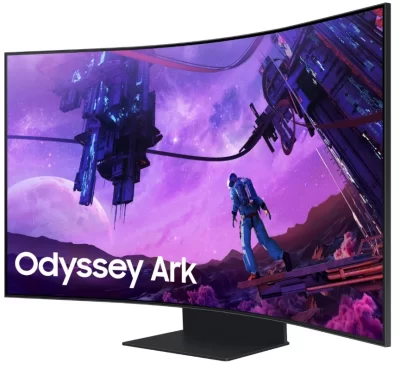
Contenido del post:
I. What is a curved monitor?
I’m sure that more than once you have heard about the now forgotten curved TVs, a revolutionary idea that came to nothing, however, the market for monitors is very different and curved monitors have triumphed becoming almost a standard today, with its advantages and disadvantages.
But what is a curved monitor? Well, as its name suggests a curved monitor is one that instead of having a flat screen, is curved, there are different designs with less or greater degree of curvature.
These monitors are very interesting for a variety of uses as they «wrap around the user» and can provide advantages over a flat one, stay to find out all about these monitors.
II. What are the pros and cons of curved monitors?
| Pros | Cons |
|---|---|
| More immersive experience | It requires a big or very curved screen |
| Reduced glare | More expensive |
| Reduced eye fatigue (healthier) | Narrow vision angles |
| Allow for better depth perception | Not suitable for multiple viewers in the same room |
| Better peripheral vision and image | Not optimal for some use cases |
In general, curved monitors offer many pros over flat monitors but not everything is perfect and they also have their cons or disadvantages, so whether it is a good choice for you will depend on each person and use, let’s analyze both types to help you decide.
III. Advantages (Pros)
Pros: More immersive experience
Curved monitors provide a much more immersive experience, this is because the curvature is closer to what our eyes see and process than those offered by a flat screen.
This curvature translates into a more immersive experience and a greater ease of viewing the entire screen, as it surrounds the user covering more visual field allowing you to feel inside the game.
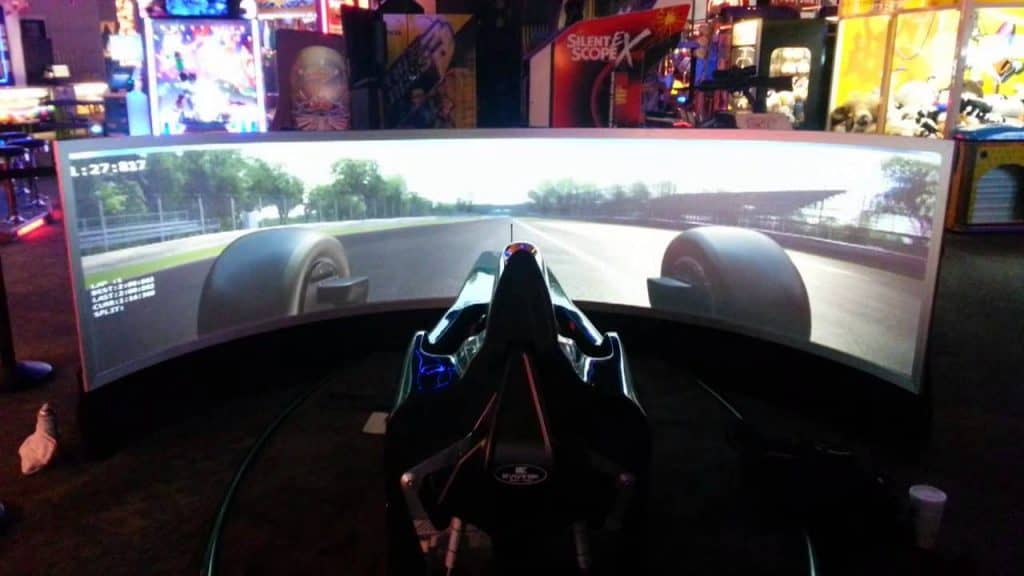
Pros: Reduces glare
Another very relevant point that is often overlooked in curved monitors is their ability to deal with glare, reflections, lights, etc ….
The curvature itself make the angles that could capture reflections or effects like glare much smaller so it is more difficult that there are reflections or any other effect that may annoy the user, cause eye fatigue or even headaches.
Pros: Reduced eye fatigue
Have you ever noticed your eyes getting tired after a long session in front of the monitor? Well, a curved monitor could help you with this, as one of the advantages of curved monitors is that they produce less eyestrain, it’s been proven that these monitors are very good at combating this common problem.
Thanks to the curvature of these curved monitors, they offer an image more similar to what our eyes are used to seeing, closer to 3D, thus reducing eye strain, besides as we have already mentioned above, the fact that it reduces reflections and lights also helps our eyes not to be affected or damaged by these effects.

Pros: Allow to better perceive the depth of the image
As we have already mentioned, the curvature offers a more immersive experience, but it does not stop there, as the image is more similar to what our eyes usually see.
This allows our brain to better process the depth of what is being displayed, thus increasing our perception of depth since in a flat monitor this is almost zero beyond seeing that there is more or less distance.
Pros: Better peripheral vision
The fact that these curved monitors can «surround» the user with their curvature has multiple advantages, among them they offer a better peripheral vision since the distance between our eyes and the edges of the screen is less than if it were a flat monitor, allowing easier viewing at the farthest sides.
IV. Disadvantages (Cons)
Disadvantages: Narrow vision angles (VA panels)
Curved monitors suffer from a very serious problem, and is that they use VA type panels, these panels are known for having awful viewing angles, ie if you see the image from the front looks perfect, but as you move sideways the image starts losing color and clarity to the point that you can lose pretty much all the color depending on how good or bad is the panel.
This is a disadvantage to take into account if you are a person who likes to move around a lot, stand up, watch the screen from the bed, etc…
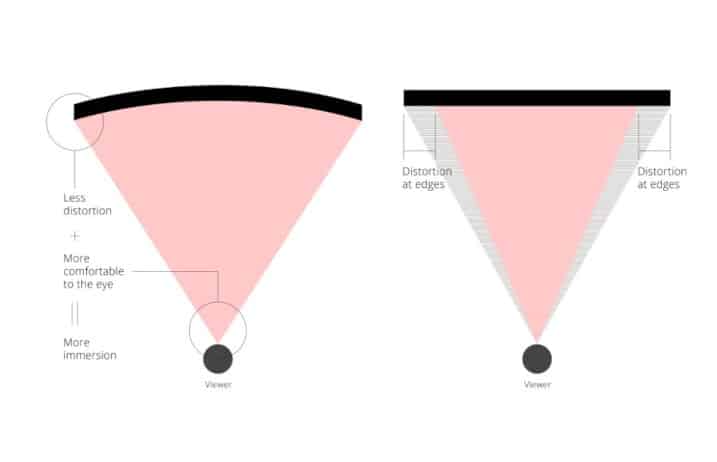
Disadvantages: It requires a big or very curved screen
Another disadvantage of curved monitors is related to the curvature itself, and is that if the screen is small curvature could be more of a drawback than an advantage, ie, screens smaller than 32 «tend not to be too benefited by this curvature, while between 34″ and 49» seem to enjoy this curvature in all its glory.
Along with this point, the degree of curvature of the screen is as important as the size of it, since a very curved screen even if it is large could be annoying or a very little curved screen could be almost imperceptible, the curvatures are based on 800R, 1000R, 1500R, 1800R, 3000R… this number indicates the diameter that would result from drawing a circle based on monitors with that curvature.
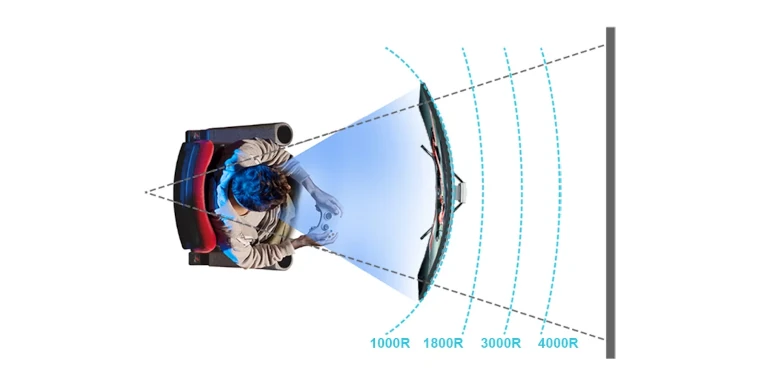
Disadvantages: Not suitable for multiple viewers on the same room
A problem that for many will not be a drawback, is how uncomfortable a curved monitor can be if you have guests in your home, if you try to show them something on your screen, this curvature that blocks the view from the sides, along with limited viewing angles can create a lousy experience for other people.

Disadvantages: Uncomfortable for watching series and films
If you are a moviegoer you should probably stay away from these curved screens, because although at first it may sound good, movies are not made to be seen closer on the periphery than on the front, so you get a weird image when watching multimedia content, plus these screens have less compatibility and aesthetics if you want to hang them on the wall as a television.
Finally, the curvature as we mentioned in the previous point, is a problem if there are several people watching as it blocks on the side and generates an unnatural image if you are watching from the sides.
Disadvantages: Price – More Expensive
While it is true that today and thanks to the massive adoption of curved monitors, their price has been reduced, if we are looking for high-end curved options they are always considerably more expensive, although in many cases it may be worth it considering the above advantages.
For now, the price of curved monitors is higher than flat ones, so it can be a very important disadvantage for many.
Who is the target of these monitors?
While this is a difficult question to answer, we are going to try to go over the pros and cons of curved monitors so that we can decide which is best for each person, going through the most general audiences as well as the preferred choice for enthusiasts in that sector, this way we can recommend something for everyone.
Gamers & Enthusiasts
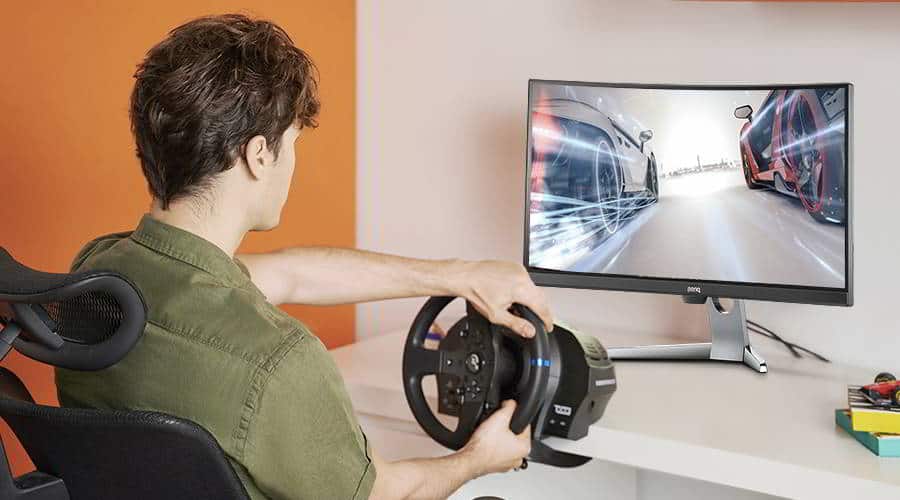
The first scenario is gamers, for this audience curved monitors offer a perfect experience and far superior to that of a flat screen, so if your main use of the monitor will be to play, do not hesitate and dare to go for a curved option.
If you want to see some of the most incredible curved monitors of 2023 don’t forget to read this article.
Work, Office and everyday use cases
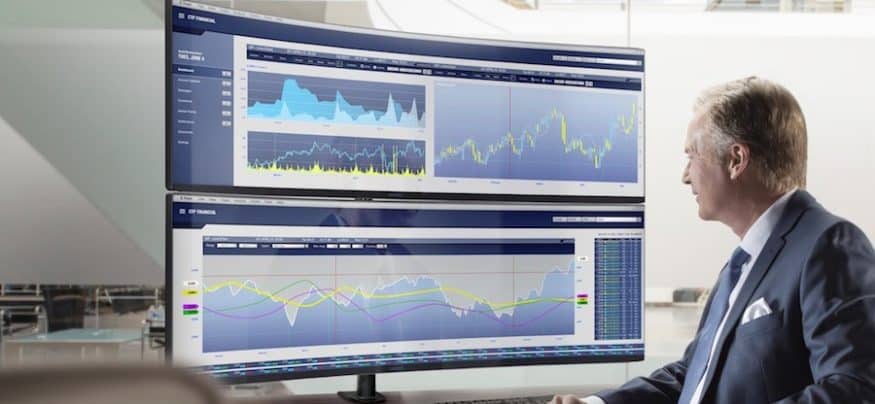
If your main use is to work and also play games from time to time, watch a video, etc … a curved monitor can also be a viable option, and is that curved monitors help to work reducing eyestrain.
In addition, the largest curved monitors usually come in a 21:9 format, which means that they are wider than normal ones, this translates into more screen space to have programs and internet pages open and therefore a greater multitasking capacity.
Multimedia (Films, series and youtube)
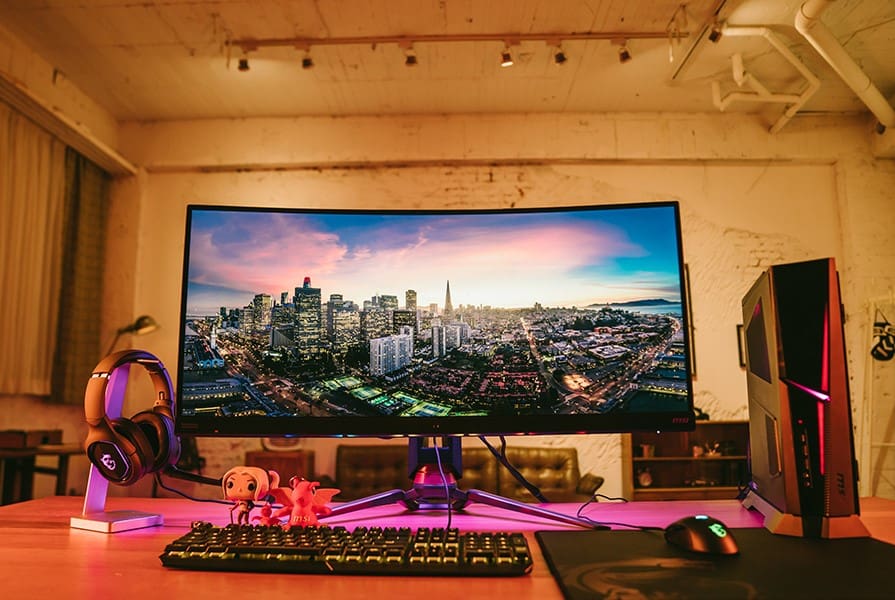
Another focus that many people give to their monitor is to enjoy multimedia content such as series or movies, but in this case we will not be able to recommend using curved monitors. While this curved monitors have many pros, the cons in this case are more important.
This is due to the following reasons already named, they are not good monitors to hang on the wall, they are more annoying to watch than a flat screen if there are several people, the viewing angles are limited and finally the curvature deforms the image since movies do not take advantage of the pronounced curvature on the sides.
